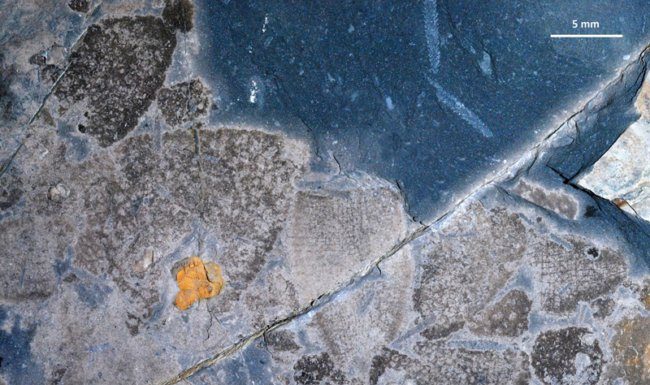@WFS,World Fossil Society,Riffin T Sajeev,Russel T Sajeev
Sponges may be simple creatures, but they basically ruled the world some 445 million years ago, after the Ordovician mass extinction, a new study finds.
Roughly 85 percent of all species died in the Ordovician mass extinction, the first of the world’s five known mass extinctions. (The other mass extinctions are the Late Devonian, End Permian, End Triassic and End Cretaceous.) However, while the Ordovician mass extinction wiped out many of these ancient creatures, one group actually prospered: sponges.
“We think the sponges thrived because they can tolerate changes in temperature and low oxygen levels, while their food source (organic particles in the water) would have been increased enormously by the death and destruction all around them,” lead study author Joe Botting, a paleontologist at Nanjing Institute of Geology and Palaeontology in China, said in a statement.
Chinese and British researchers discovered the fossils of some of these sponges in the newfound Anji Biota, a fossil deposit in the bamboo forests of Zhejiang province, in eastern China. The scientists uncovered nearly 100 species during their first excavation at Anji, and 75 of these species were sponges, many with preserved soft tissues, they said. [Wipe Out: History’s Most Mysterious Extinctions]
The diversity of sponges is impressive given that the end-Ordovician event is the second-largest mass extinction on record, the researchers said.

Fossils of 444-million-year-old sponges from the Anji Biota in China that thrived after the mass extinction.
Credit: J.P. Botting
The extinction occurred when a sudden, intense ice age was followed by an equally rapid warming period, which changed the ocean’s chemistry and circulation, the researchers said. Earlier studies show that plankton quickly recovered after the extinction, but there are few fossils from that time period that show how other organisms fared, they said. In fact, until the discovery of the Anji Biota, the only known, well-preserved fossil deposit from that era was South Africa’s Soom Shale.
Usually, mass extinctions decimate animal life, with the surviving ecosystems holding only small, stunted species that somehow managed to survive. In contrast, thousands of fossils indicate that the sponges in the Anji Biota were large and complex. Moreover, while some sponge species lived only in certain areas, others were so plentiful, they formed forests on the seafloor, the fossils show.
In addition, the researchers uncovered several mollusks known as nautiloids, as well as a rare find: a single fossil sea scorpion that still had its legs.
It’s possible that the vast abundance of sponges in ancient China helped the post-extinction ecosystem recover “by stabilizing the sediment surface [and] allowing sessile [immobile] suspension feeders such as brachiopods, corals and bryozoans to recover rapidly,” the researchers wrote in the study.
What’s more, other scientists have discovered numerous sponge remains dating to periods following other mass extinction events, suggesting that it’s not uncommon for sponges to take over following a major ecological collapse, the researchers said.
The findings were published online Feb. 9 in the journal Current Biology.
Courtesy: Article by ,Live science.
Key:@WFS,World Fossil Society,Riffin T Sajeev,Russel T Sajeev



 May 11th, 2017
May 11th, 2017  Riffin
Riffin  Posted in
Posted in  Tags:
Tags: 